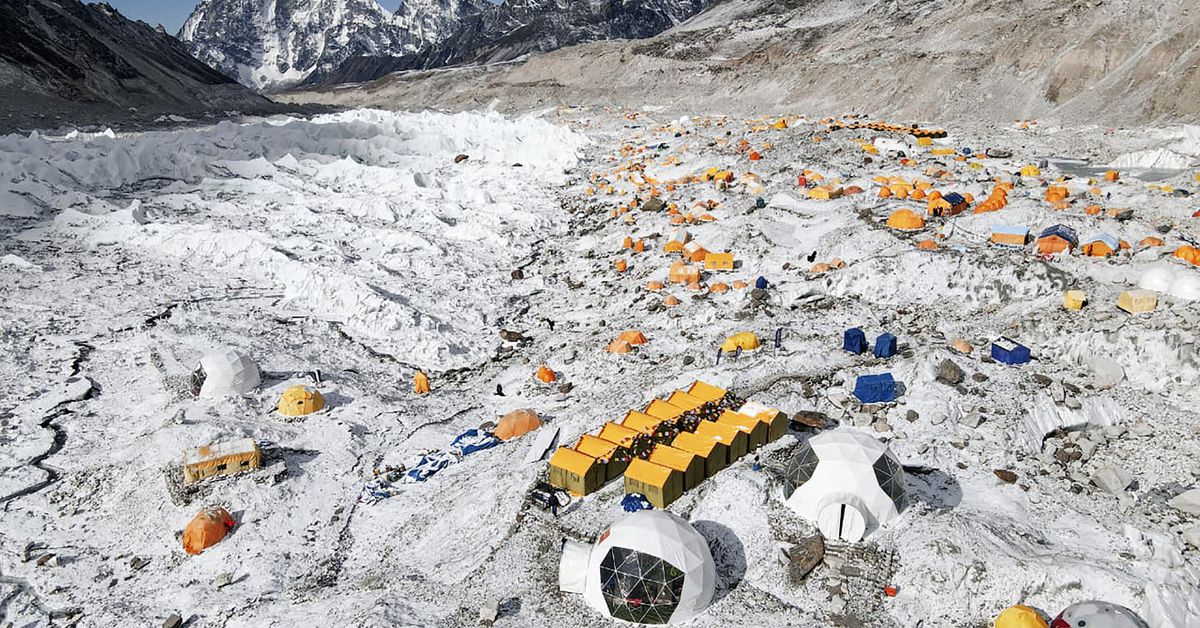
Nepal is moving the Everest base camp off of the melting Khumbu glacier, the BBC reported.
Research shows that the Khumbu glacier is rapidly thinning as a result of the changing climate. “We see increased rock falls and movement of melt-water on the surface of the glaciers that can be hazardous,” Scott Watson, a researcher at the University of Leeds who studies glaciers, told the BBC.
The current base camp location is becoming destabilized by the ice melt and is no longer safe. Climbers say cracks appear in the ground overnight, and guides say they expect more avalanches and ice falls at the current location going forward. The new base camp will be around 200 to 400 meters lower in altitude — and in a spot where there isn’t year-round ice.
Climate change isn’t the only contributing factor, though: the sheer number of people passing through the base camp adds to the destabilization. “For instance, we found that people urinate around 4,000 liters at the base camp every day,” Khimlal Gautam, a member of the committee that recommended the move, told the BBC. “And the massive amount of fuels like kerosene and gas we burn there for cooking and warming will definitely have impacts on the glacier’s ice.”
Conditions on Everest are rapidly deteriorating overall, not just at the base camp. Other glaciers are melting, losing ice in a few years that took hundreds of years to develop. It’s making the climb more dangerous. The melting is also revealing the frozen, dead bodies of past climbers and piles of garbage.
Nepal’s tourism department still has to discuss plans for the move with local stakeholders, including local communities who might be affected by the shift. But if all goes as planned, base camp could move by 2024.






